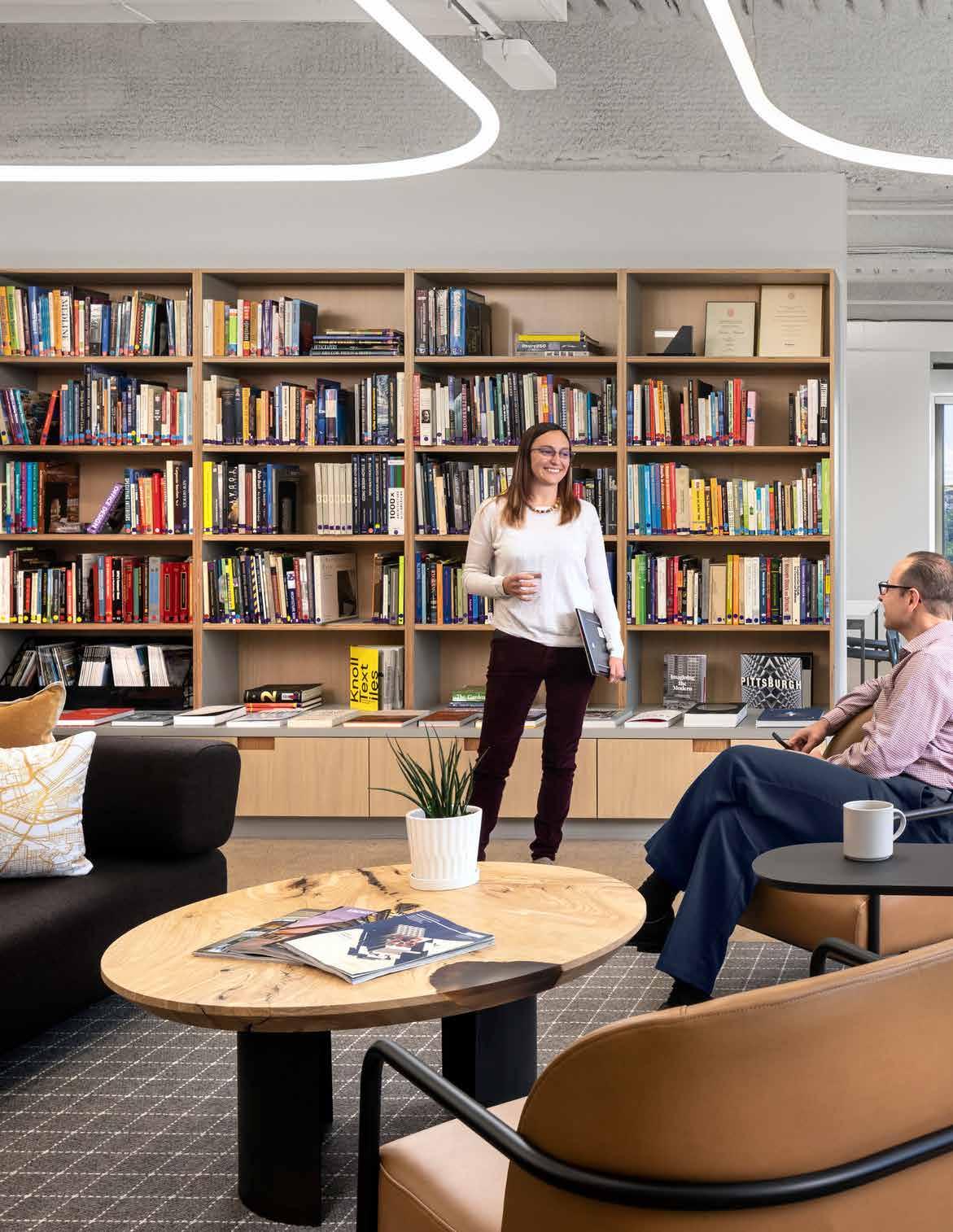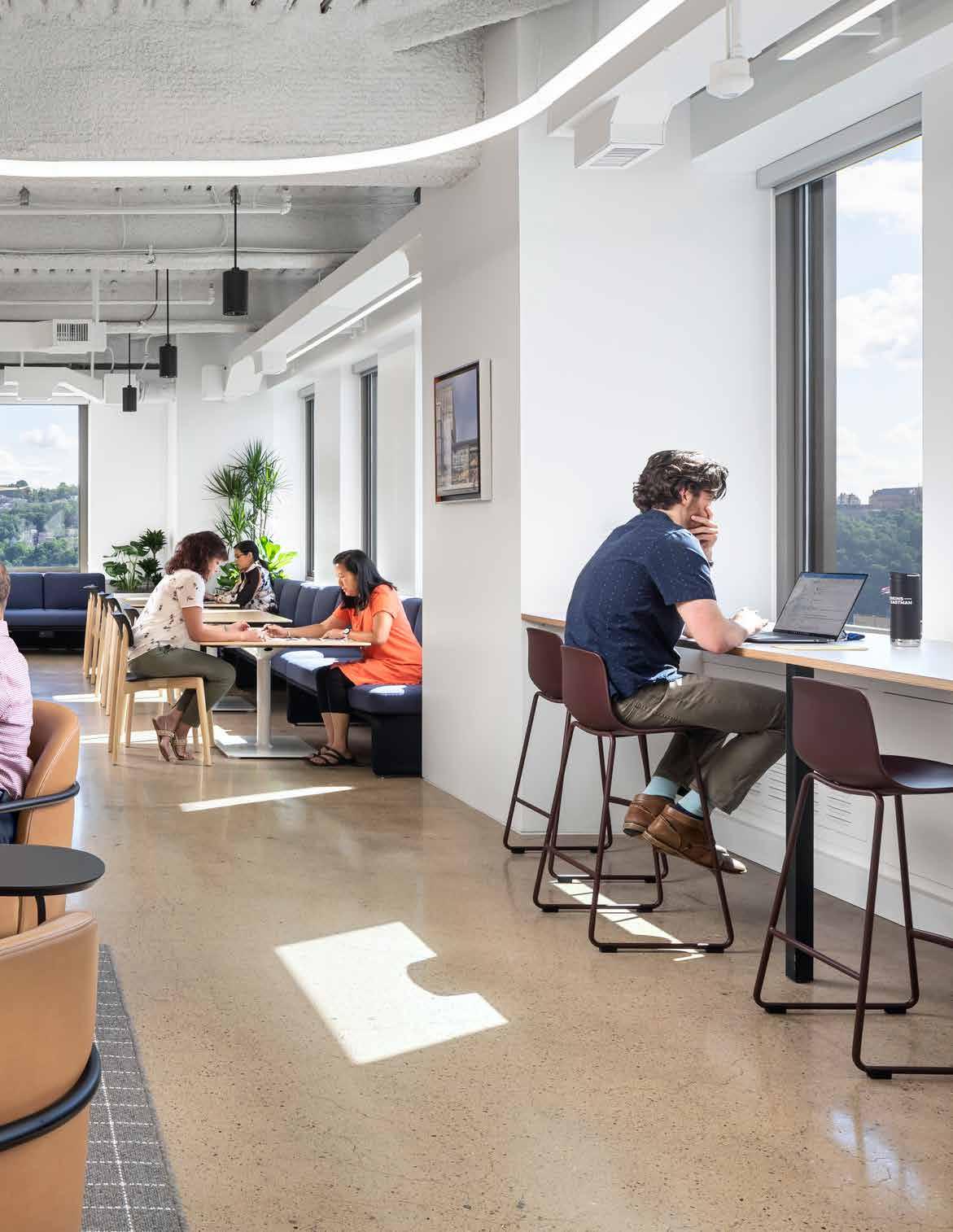

Pittsburgh Studio The Story Behind our
AN OPPORTUNITY FOR CHANGE
COVID-19 PANDEMIC
Along with thousands of other businesses, Perkins Eastman’s offices closed on March 16, 2020, as the COVID-19 pandemic took hold. At this time, nearly all of our thousand-plus employees across 22 global locations pivoted to remote work.
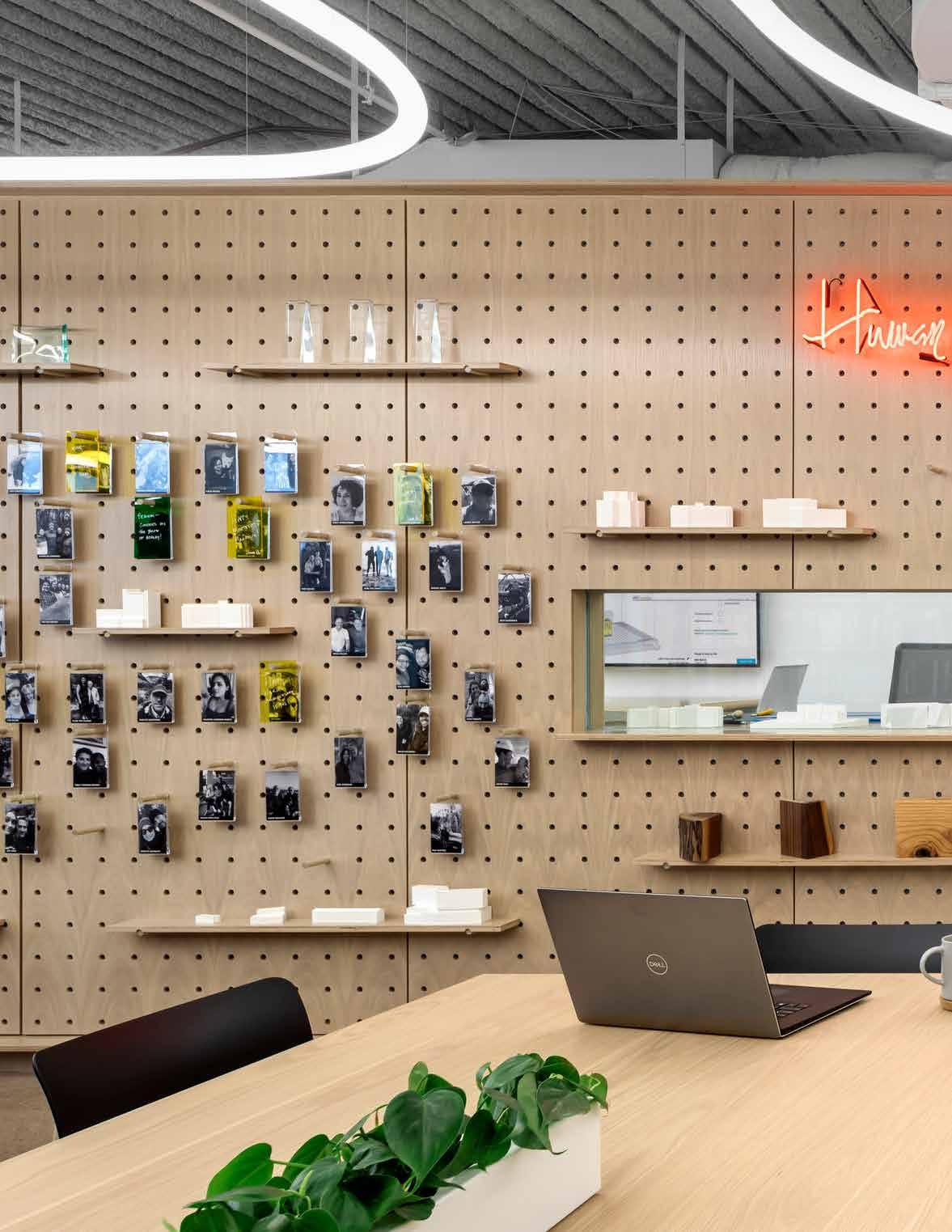
REMOTE WORK
Large-scale remote work was new to our organization. Like many other firms, we believed that architects and designers needed to be in the office together in order to do their best work. But being forced from the office led us to discover that remote work not only “works” for us also has many unanticipated advantages.
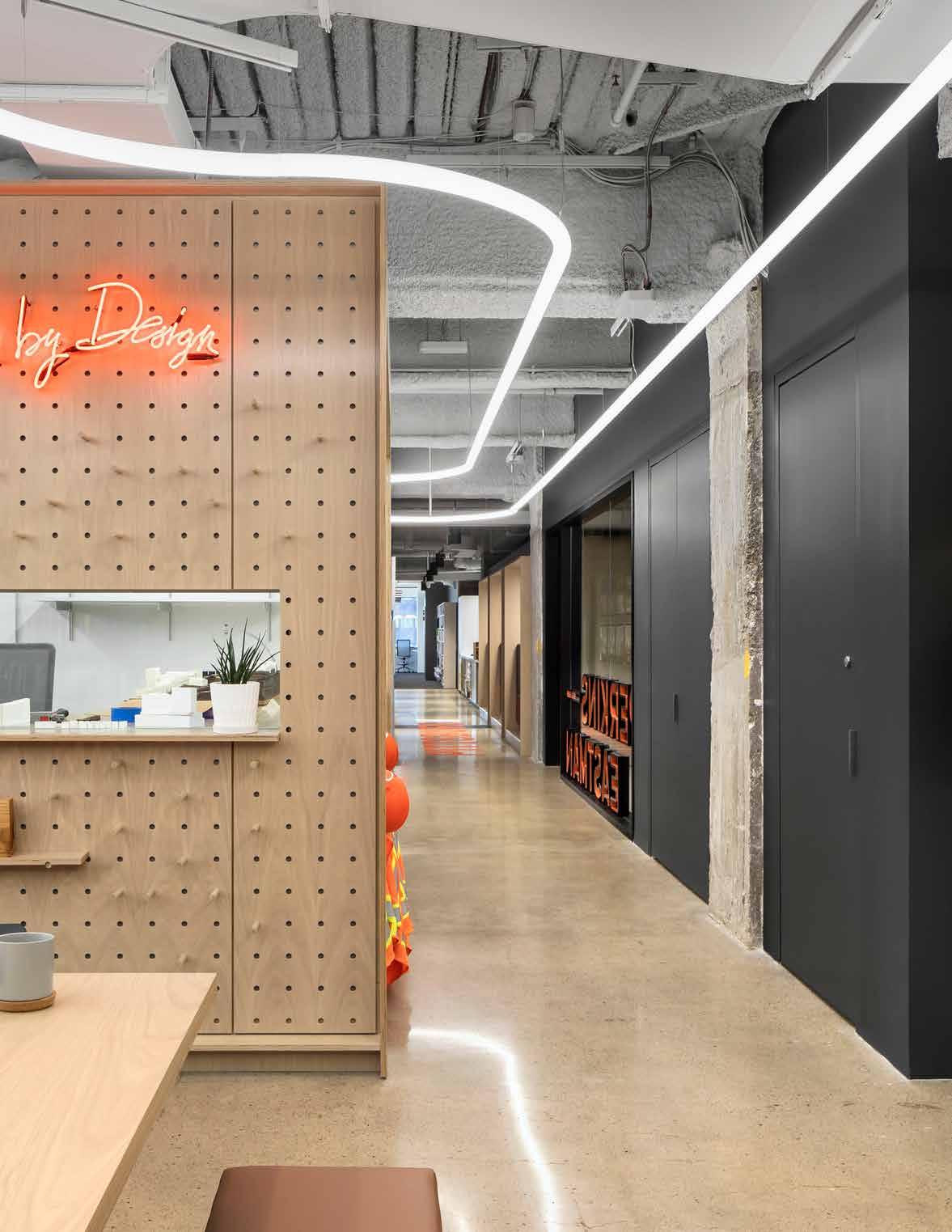
RESEARCH
We learned through employee surveys and other feedback that our people enjoy the freedom and flexibility of remote work. There were some initial bumps in the road, like making sure everyone had the proper equipment and technology support that they needed, but we quickly adapted—and even found benefits—to working remotely.
Our surveys also found that a large majority of employees want to keep working remotely, at least in some capacity, even when it’s safe to return to the office.
WORK/LIFE RE-IMAGINED
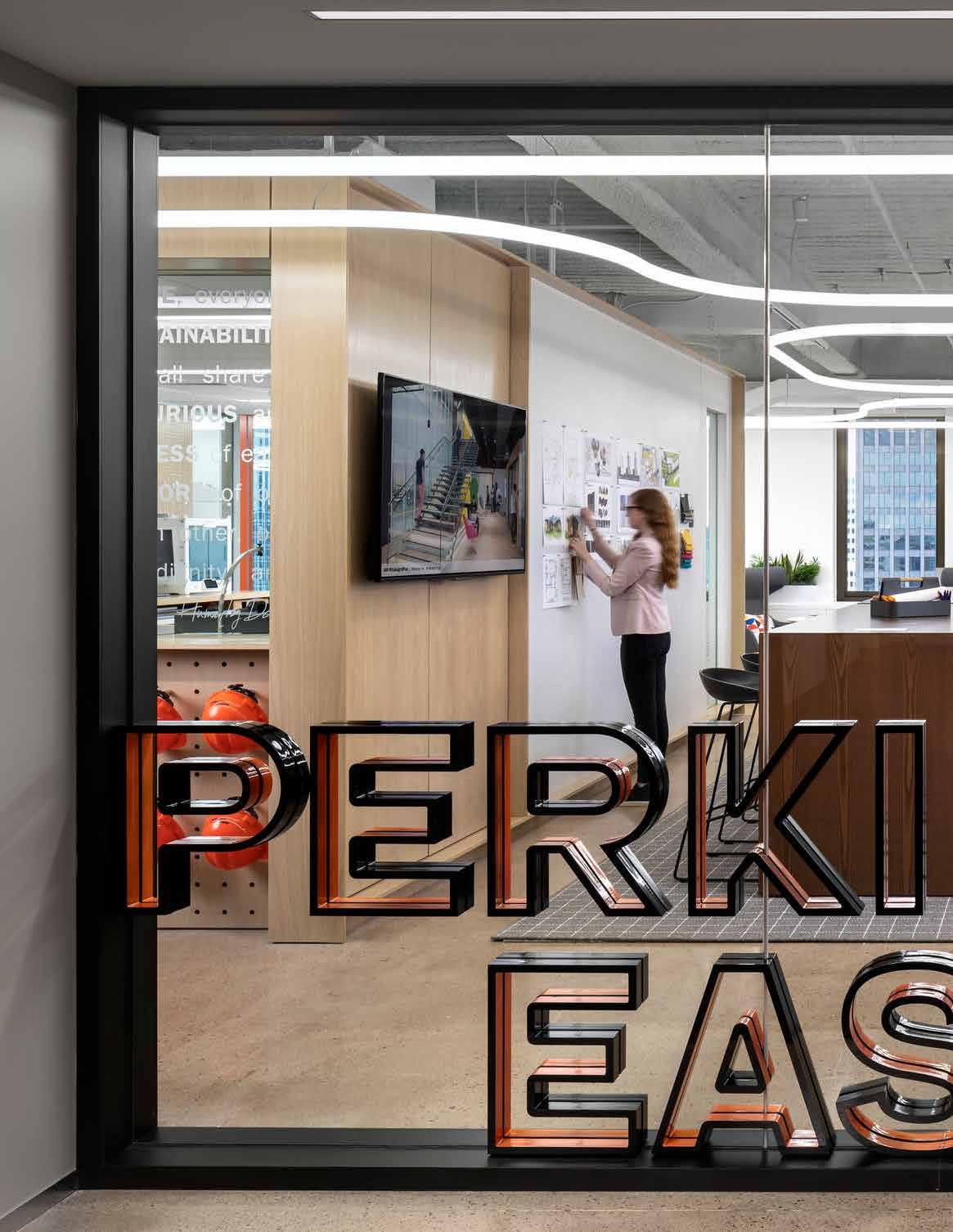
As we experienced these changes, many of our clients were experiencing the same disruptions—and revelations—about remote work. As the pandemic dragged on, it became apparent that remote work could be more than a stopgap solution. Questions about the future of the workplace began to surface: Could working from home, at least in some capacity, be a feasible and even beneficial long-term solution for our company? What would the office look like when (and if) employees finally returned? And how could we preserve the benefits of remote work?
Considering our sizable workplace practice, the office of the future became a major focus of our investigations. We learned a great deal through research, surveys, and roundtable discussions with corporate executives across a wide range of industries:
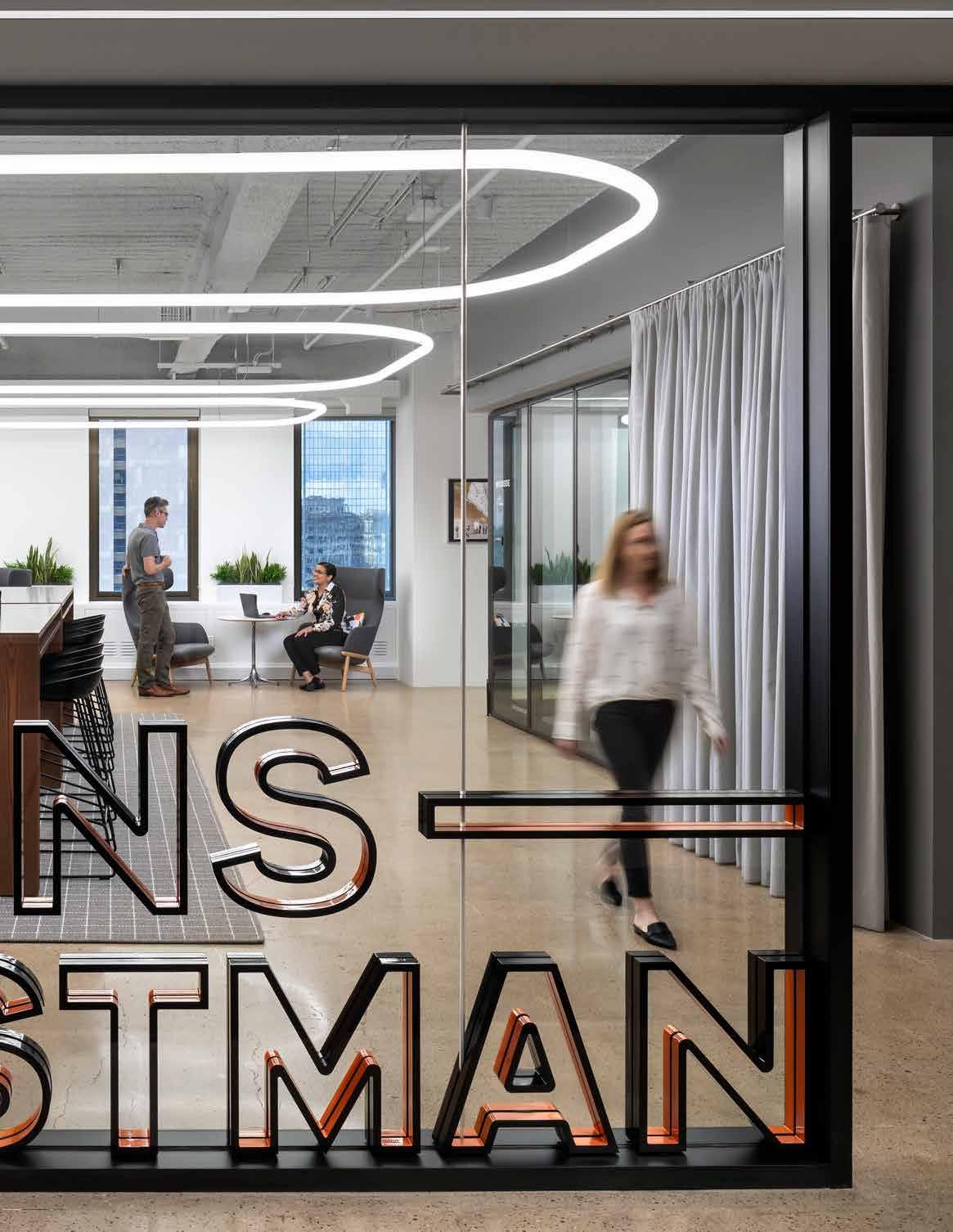
1. Remote work “works,” but 100% remote work is not the ideal scenario for most companies (or employees).
2. The office is especially important for mentorship, building relationships, hosting clients and networking events, and certain types of collaboration.
3. Technology is an important tool, but it should be used to support human interaction rather than replace it.
WALKING THE TALK
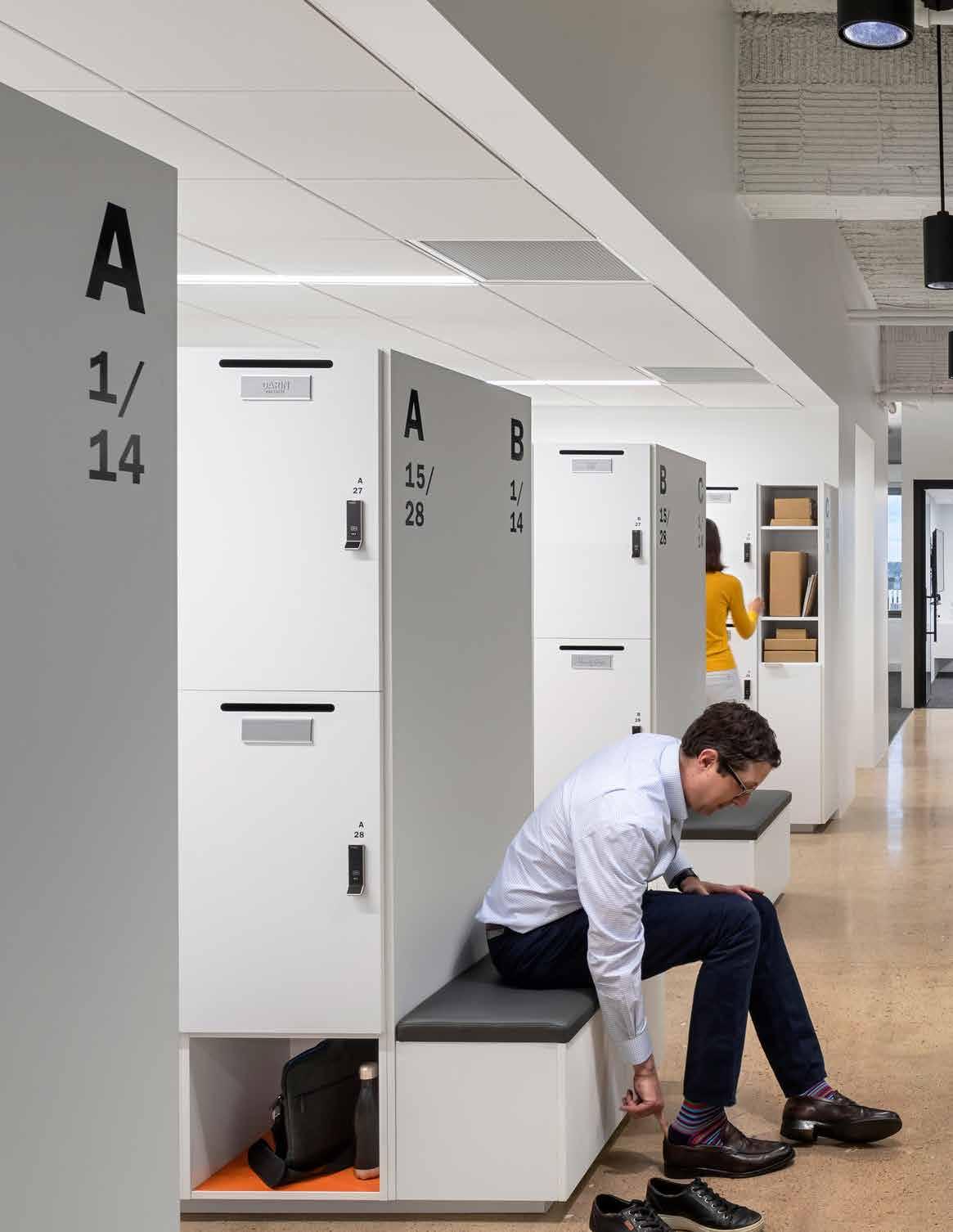
New ideas for the workplace took shape as a result of our explorations. We could see that a hybrid scenario—a combination of remote and in-office work—offered advantages for both employers and employees, enabling:
1. Reduction of overall square footage needs
2. Greater allocation of space for community building, showcasing work, and amenities
3. Flexibility and convenience for our employees by way of wide range of seating postures and types
4. Potential productivity gains due to fewer distractions, reduced commute time, increased employee satisfaction
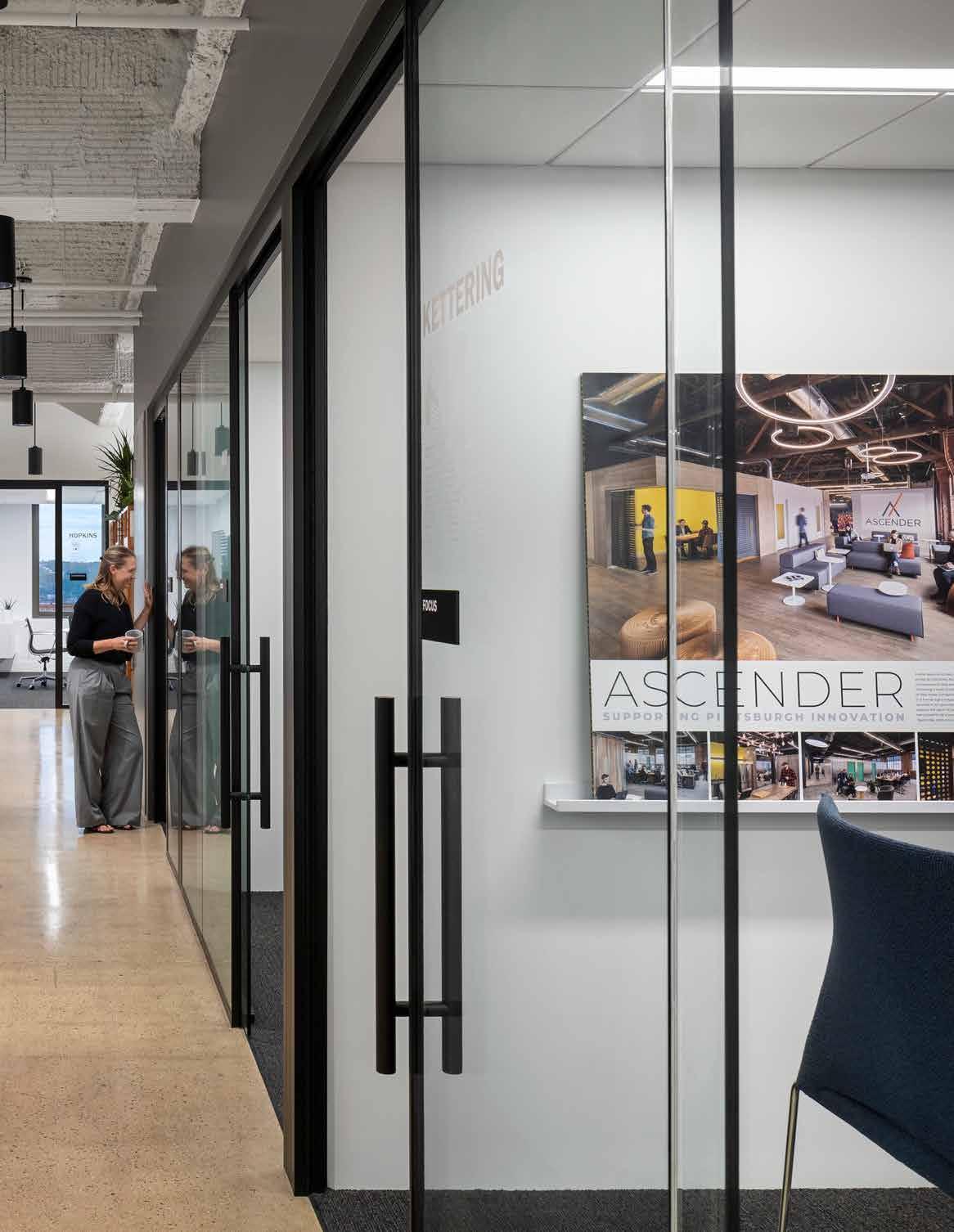
The lease for our Pittsburgh office was up for renewal, presenting the perfect opportunity to put the hybrid scenario into practice.
To kick off the strategic visioning process, we brought our Pittsburgh employees together for a relocation workshop. Through a series of exercises and guided discussions, our employees identified the following goals for their new workspace:
• In crease firm presence and brand recognition in Pittsburgh
• Attract and retain talent
• Celebr ate innovation and collaboration
• Allocate more space for project visioning and design processes
• Sup port flexibility and choice of locations to develop work
STUDIO DESIGN
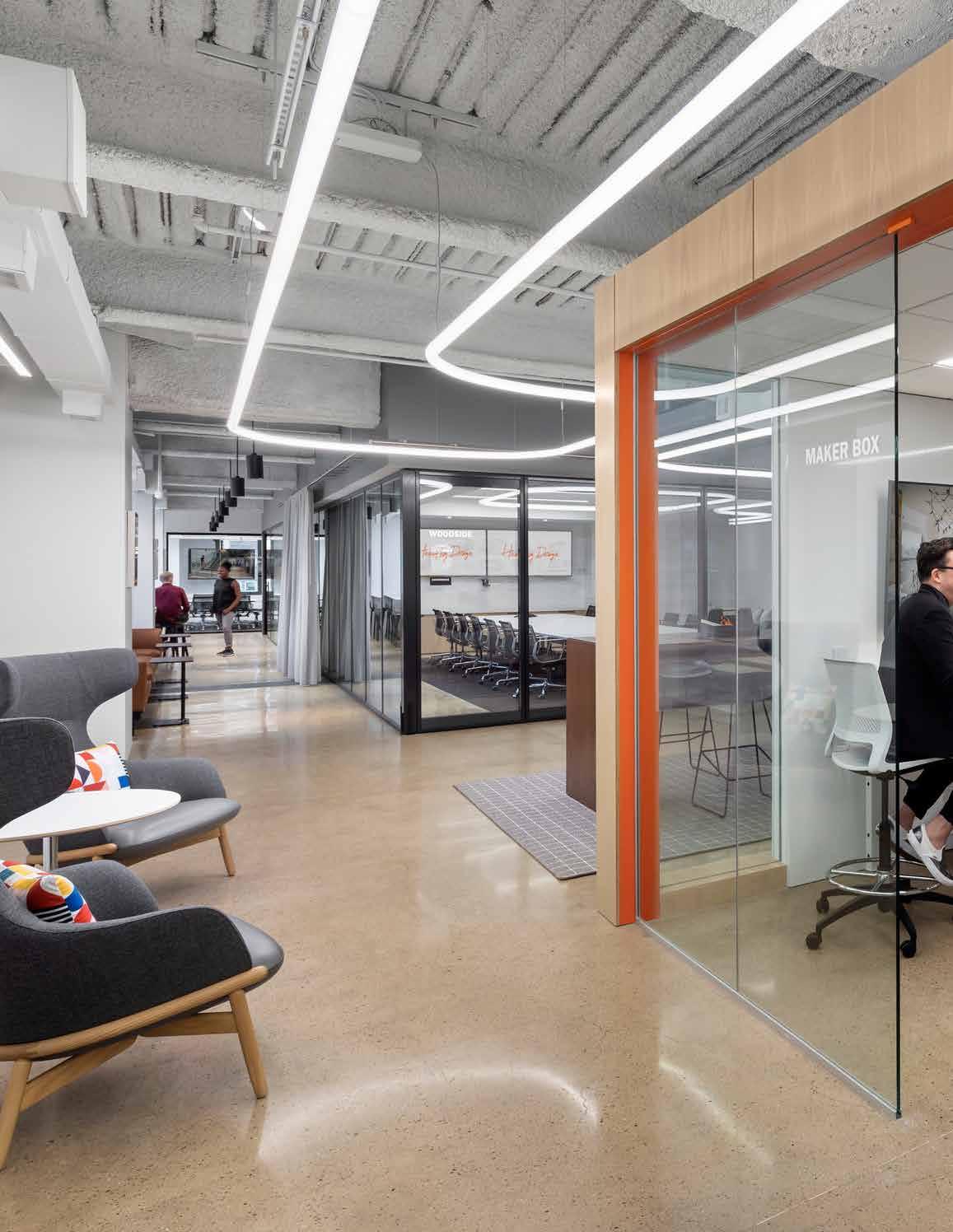
We applied our strategic pre-design process to the planning of the new studio, working with 11 elected ambassadors to establish guiding principles and planning priorities and communicate team questions and concerns:
Think of the office as a resource hub and collaboration center
Create spaces that support culture-building, mentorship and onboarding
Embrace WFA (work from anywhere) and shift to free-address
Design for minimal environmental impact (limit number of materials)
Uncover the ways we work that exemplify our Human by Design ethos
Provide a variety of work settings to support new ways of working
Build in resilience; prioritize flexibility and future proofing via cost-effective measures
Introduce back-door entry “mudroom” with handwash sink, coat closet and personal storage
Democratize access to daylight and views to the outdoors
Elevate employee wellness measures via improved HVAC systems, wellness rooms and LEED Gold minimum
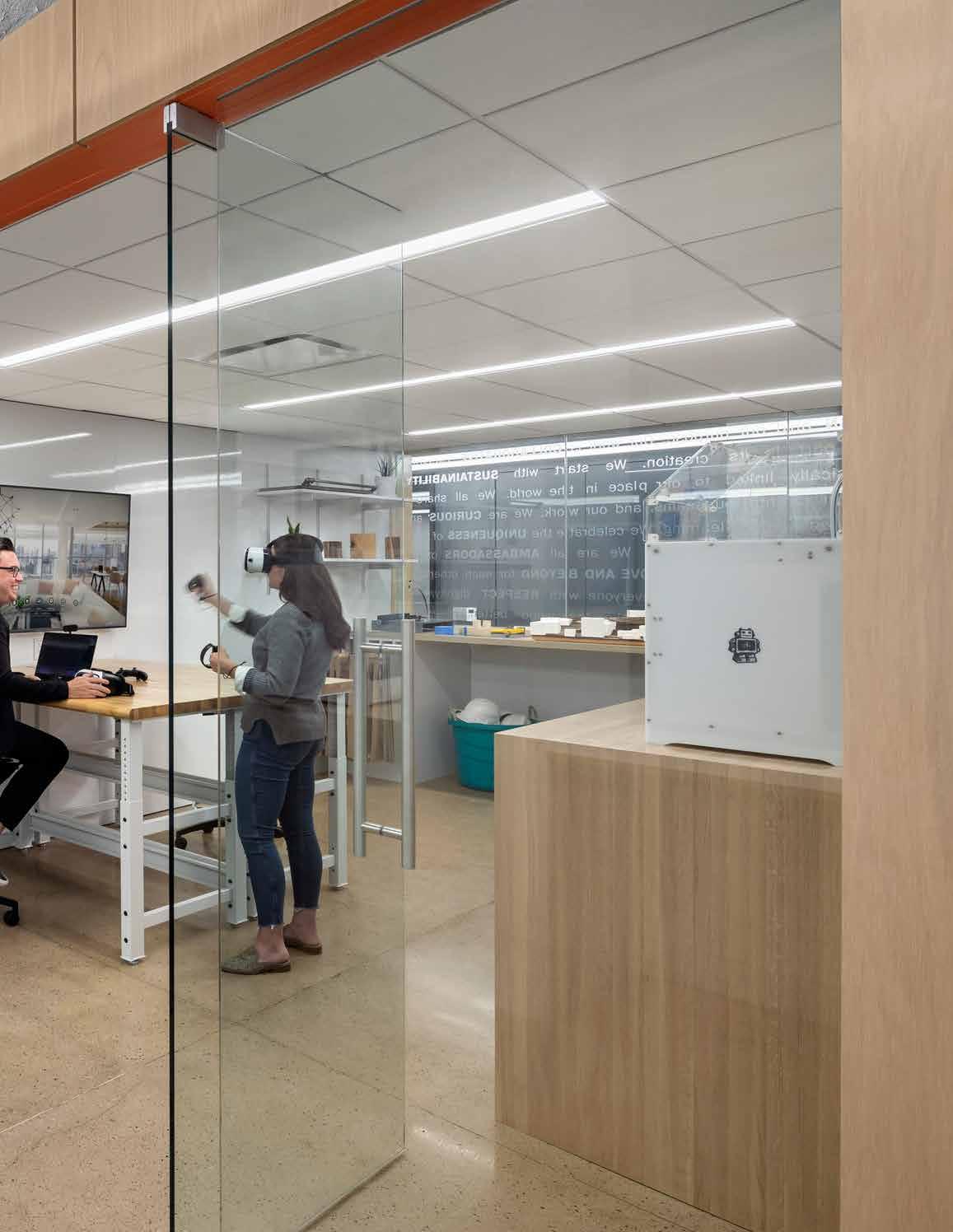
The new studio is conceived as a destination for an agile workforce, focusing on communal spaces for working and socializing. A combination of unassigned traditional and non-traditional free-address workpoints replace permanent assigned desks.
The space is designed to adapt as needs and priorities change over time, with movable furnishings and a flexible technology infrastructure that allows for fluid reconfiguration.
MEET THE NEW PITTSBURGH STUDIO
WORKSHOP
Socialize, relax and eat, or meet and collaborate with colleagues. Items can remain for three consecutive days for active projects.
PERIMETER SEATING
Gather, socialize and work informally.
MAKER BOX
Hands-on activities, client interactions, and demonstrations. Designated surfaces can be used to store items overnight.
“THE HUB”
Welcome guests, collaborate, meet, relax, socialize or complete heads-down work.
START
WORKSTATION NEIGHBORHOOD
Complete focused, heads-down work or take phone calls where you don’t expect to actively participate.
CONFERENCE ROOMS Named for projects significant to staff as a point of pride
MAY
May Visitor’s Center has major significance in the firm’s history as our very first completed project.
KETTERING
Symbolic of our longstanding relationships with many clients throughout our history, this partnership began in the mid-1990s.
HOPKINS
The Hopkins-Nanjing University Center is our first completed building in China and is symbolic of the reach and quality of our work internationally.
WOODSIDE
A catalyst for the founding of the Pittsburgh studio, Woodside Place profoundly changed the senior care industry in the United States.
CLARENDON
The firm’s first civic project, the modestly sized Clarendon Library was a recipient of the NYC Art Commission Award for Excellence, among other honors.
OLD STUDIO (PRE-COVID APPROACH)
• 14,230 USF
• 85 Dedicated Workpoints
• Approximately one seating choice per person
REDUCED FOOTPRINT BY 17%
ADOPTED FREE ADDRESS MODEL INTRODUCED WFA POLICY REIMAGINED WHAT A WORKPOINT IS MATERIAL WORKSHOP
Ad-hoc collaboration, client interactions, demonstrations, or tours. Countertops are intended for active material/product selection and should be left in a presentable manner.
NEW STUDIO
• 11,895 USF
• 109 Free-Address Workpoints
• Nearly two seating choices per person
CONSUMERS
Advanced for its time as the firm’s first sustainably focused project, Consumers Union Headquarters was designed around a heightened emphasis on employee wellness.
CHIMNEYS
Green Chimneys is a worldwide leader in animal-assisted and educational activities for children with special needs
STUDIO POLICIES
Clear expectations and two-way communication are key to successful change management. In order to maintain our vibrant studio culture, we established five guiding values:
RESPECT THROUGH ETIQUETTE
Encourage considerate communal behavior to accommodate everyone’s needs.
FLEXIBILITY AND MINDFULNESS
Define roles and responsibilities, be inclusive, and continually improve.
SMART COMMUNICATION
Set early and consistent protocols for check-ins, scheduling and primary modes of contact.
TOOLS AND TECHNOLOGY
Establish standards for virtual tools and office resources (materials, whiteboards, etc.).
BEST-IN-CLASS ONBOARDING
Be friendly, welcoming and helpful with new studio members.
To keep our employees informed/in the loop, we created a studio “Playbook” with information about our new workplace and Working From Anywhere (WFA) arrangement. The playbook includes definitions of key terms, expectations around scheduling and when it is necessary to be in the office, and guiding values to support our vibrant studio culture.
We work to maintain open channels of communication: town hall meetings, email check-ins, conversations about new resources/tools and how to use them.
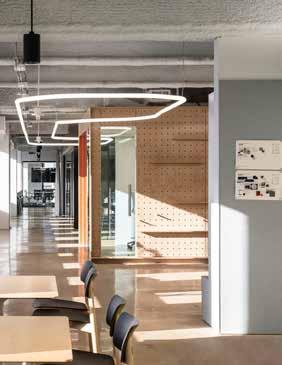
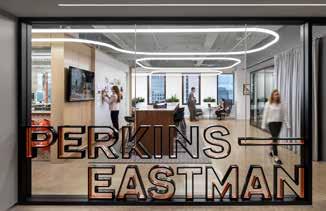
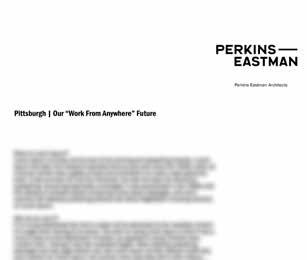
STUDIO POLICIES
FREE-ADDRESS
The new Pittsburgh studio is a free-address environment, which means that seats are available in order of arrival rather than assigned. Staff may choose from a variety of workpoints (open workstation, window ledge, booth, lounge, etc.) when working at the studio. This arrangement enables our employees to choose the work setting within the studio that is best suited to their task or preference.
PLAYBOOK
Our “Studio Playbook” provides guidance to help our employees navigate new ways of working. This includes etiquette for noise, interruptions, sharing spaces, visual cleanliness, and meals.
STUDIO
Supporting a vibrant studio-first culture remains paramount. While the intent of the WFA arrangement is to provide our staff flexibility and choice, “face time” with colleagues and supervisors is important and necessary for effective mentorship, collaboration, and collegiality. As such, the WFA arrangement assumes a combination of in-office and remote work. Employees are expected to make the office their primary work location and be in the office on average three days per week, outside of an agreed-on flex arrangement.
WORK FROM ANYWHERE
When working from anywhere, it is essential to establish expectations with supervisors and colleagues regarding the mode and frequency of communications. Whether working in the studio or from an alternate setting, Employees must be accessible during their designated business hours. It is the responsibility of the PE team member to coordinate and communicate the days and hours they expect to work off-site.
It is important to maintain a professional home setting that is free of distractions and equipped with the necessary tools, technology, and furnishings to support your productivity.
CULTURE
Culture-building, mentorship, free address, and successful onboarding are key priorities. To facilitate a successful onboarding experience, new staff will participate in a structured orientation and temporary in-studio working arrangement for approximately three months, during which they are expected to work in the studio five days per week. This will enable new PE team members to observe the studio culture and establish relationships with colleagues before transitioning to a WFA arrangement.
FLEX WORKING
Flex working is any type of long-term working arrangement that gives some degree of flexibility on how long, and when, a PE team member works. These arrangements include flextime, compressed work schedule, or part-time.
CREDITS
Author: Perkins Eastman | Design Strategy
Leadership Team: Jennifer Askey, Renee Deets, Scott Fallick, Connor Glass, Jane Hallinan, Rebecca Milne, Lee Pellegrino, Bethany Yoder, Jeff Young
Change Ambassador Team: Samantha Belfoure, Laurie Butler, Jessie Catenacci, Jennica Deely, Melissa Destout, Aline Funari, Charles Krimmel, Andrew Lawrence, Emily Scheffler, Christina Szejk, Max Winters
Cover and Back Image: Copyright Perkins Eastman
Photography: Copyright Perkins Eastman pages 2,4,5,6,7,8,9,10,11,20,21,22,23,24, 25,36,38,39,40,41
Icons: The Noun Project pages 3,5,7,8,10,14,15
Graphics: Stock Adobe icons page 12
©2021 Perkins Eastman. All rights reserved.
No part of this publication may be reproduced, stored in a retrieval system, or transmitted in any form or by any means, electronic, mechanical, photocopying, recording, scanning or otherwise, except as permitted under Section 107 or 108 of the 1976 United States Copyright Act.
